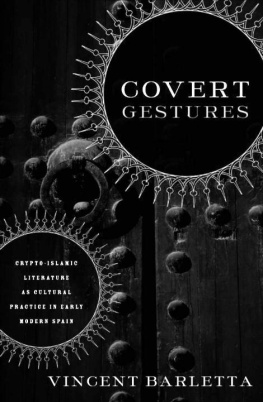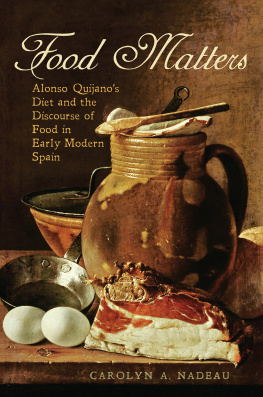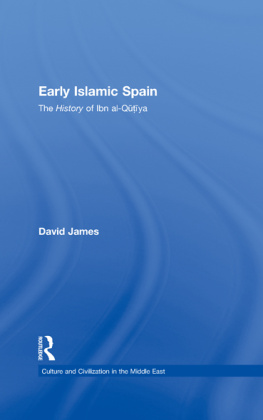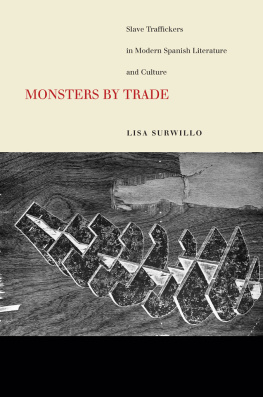Vincent Barletta - Covert Gestures: Crypto-Islamic Literature as Cultural Practice in Early Modern Spain
Here you can read online Vincent Barletta - Covert Gestures: Crypto-Islamic Literature as Cultural Practice in Early Modern Spain full text of the book (entire story) in english for free. Download pdf and epub, get meaning, cover and reviews about this ebook. year: 2011, genre: Religion. Description of the work, (preface) as well as reviews are available. Best literature library LitArk.com created for fans of good reading and offers a wide selection of genres:
Romance novel
Science fiction
Adventure
Detective
Science
History
Home and family
Prose
Art
Politics
Computer
Non-fiction
Religion
Business
Children
Humor
Choose a favorite category and find really read worthwhile books. Enjoy immersion in the world of imagination, feel the emotions of the characters or learn something new for yourself, make an fascinating discovery.
- Book:Covert Gestures: Crypto-Islamic Literature as Cultural Practice in Early Modern Spain
- Author:
- Genre:
- Year:2011
- Rating:4 / 5
- Favourites:Add to favourites
- Your mark:
- 80
- 1
- 2
- 3
- 4
- 5
Covert Gestures: Crypto-Islamic Literature as Cultural Practice in Early Modern Spain: summary, description and annotation
We offer to read an annotation, description, summary or preface (depends on what the author of the book "Covert Gestures: Crypto-Islamic Literature as Cultural Practice in Early Modern Spain" wrote himself). If you haven't found the necessary information about the book — write in the comments, we will try to find it.
Vincent Barletta: author's other books
Who wrote Covert Gestures: Crypto-Islamic Literature as Cultural Practice in Early Modern Spain? Find out the surname, the name of the author of the book and a list of all author's works by series.
Covert Gestures: Crypto-Islamic Literature as Cultural Practice in Early Modern Spain — read online for free the complete book (whole text) full work
Below is the text of the book, divided by pages. System saving the place of the last page read, allows you to conveniently read the book "Covert Gestures: Crypto-Islamic Literature as Cultural Practice in Early Modern Spain" online for free, without having to search again every time where you left off. Put a bookmark, and you can go to the page where you finished reading at any time.
Font size:
Interval:
Bookmark:

VINCENT BARLETTA

- Michel de Certeau, L'Absent de l'histoire
They might substitute for public ritual prayer some covert gesture.
-Ahmad ibn Bu Jum'a al-Maghrawi (1503)
ix
I
Oh, were not all sufferings time?
-Herman Hesse, Siddhartha
The Castilian Muslims who accepted Christian baptism in 1502 in exchange for the right to remain in the Iberian peninsula could not have known that a century later their grandchildren would be expelled from Spain. In Aragon these Christian conversions happened twenty-three years later, though even then there would have been little reason to suspect that a Spanish king would ever order the expulsion of several hundred thousand Christian converts. That Felipe III ordered this expulsion in 1609 stands as one of the larger errors of Spanish domestic policy during the early modern period and, from the perspective of those who were expelled, a callous and unjust act of inhumanity against a population that had an eight-century history in the peninsula.
Between the time of their conversion to Christianity and their expulsion, the Muslims of Spain were commonly (though not exclusively) referred to as moriscos. This term is derived from moro, the most common Castilian term for a Muslim during the medieval and early modern periods, and -isco, a suffix that suggests the origin of the term it modifies, as in Juan Ruiz's example of the guitarra morisca (Moorish guitar) in his fourteenth-century Libro de buen amor (Book of good love). The Moriscos formed a large minority population that for the most part lived in a string of communities throughout Castile, Aragon, and Valencia. Given the largely coercive nature of the Moriscos' conversion to Christianity (a deal they could not have refused) and the fact that most communities were located in rural, relatively isolated parts of the country, the vast majority of these converts from Islam, and their descendents, led a complex and largely hidden life as secret or crypto-Muslims throughout the sixteenth and into the seventeenth centuries.
One of the principal ways in which the Moriscos held on to their Muslim faith and practice was through the steady copying, circulation, and use of traditional narratives about Islamic themes and figures from the Qur'an. Such practice has traditionally been seen as part of a collective effort to facilitate the process of cultural resistance in the face of persistent Christian pressure (which in many cases took violent and direct form) to abandon Islam and everything associated with it (Galmes de Fuentes 1986; Hegyi 1978). Official censure of Islamic culture in sixteenth-century Spain did in fact focus on a wide range of issues, some only tangentially associated with religion. These could include styles of dress, popular celebrations, marriage, baptismal, and funerary customs, the use of public baths, the Arabic language, and the possession of books in Arabic script (Garrad 1954).
Evidence of a direct link between written texts and more common tools of resistance in Morisco communities is certainly not hard to find. We may take as a not so singular case the fact that in the nineteenth century a small collection of Morisco books - including a copy of one of the most popular of their narrative works, the Hadith de Yucuf (Story of Joseph) - was found in a cave in Aragon, hidden alongside a small cache of rusted weapons. Also important for Morisco resistance, at least from a symbolic perspective, is the relatively large corpus of polemical texts inherited from the medieval period, in which Moriscos directly attack Christian and Jewish beliefs (Cardaillac 1979).
There is, however, another very important aspect of the traditional narratives of the Moriscos, namely, the question of how these narratives facilitated and helped to give shape to social processes at a much more local, even personal level in Morisco communities themselves. As a growing corpus of ethnographic work in minority communities has shown, it is a fundamental analytical mistake to frame their cultural practice in terms solely of their resistance to the social and cultural pressures of the dominant group. Such a perspective runs the risk of presenting minority communities as homogeneous to the point of blurring any sense of the internal diversity that exists within them; it also defines these communities negatively, by showing them through the lens of what they are not, namely, the dominant majority. In fact, it is frequently the case that local, even face-to-face, interactional factors shape social organization and practice in minority communities to a much larger degree than the more large-scale project of cultural resistance. And while the difficult situation that the Moriscos faced with respect to Spanish Christians is certainly an integral part of any full consideration of Morisco literature (as a long, painful history of slavery is also a crucial part of any comprehensive view of African American literature), it is necessary to be careful not to exaggerate its importance and to take into full account issues that are specific to cultural life within the Morisco communities themselves.
The specific argument of this book is that the traditional Islamic handwritten narratives of the Moriscos helped this minority community to survive for more than a century in early modern Spain largely by giving them powerful cultural tools to deal with time. By time I do not mean its seemingly objective organization into days, weeks, and years, but rather the more phenomenological issue of our experience of, or, as Martin Heidegger has put it, our "reckoning with" time in socially embedded settings characterized by emotional engagement and agentive action, as well as complex and dynamic relations of power. In the case of the Moriscos, traditional Islamic narratives aided in the social construction of theories regarding inherently time-related issues such as their very uncertain present, an increasingly murky Islamic past, and the inescapable question of their individual and communal mortality. Such theories of time, experience, and action permeate the literature of the Moriscos. This fact places their handwritten narrative texts upon a unique, inherently vital plane. Much more than a mere epiphenomenon or ornament of aesthetic pleasure, the literature of the Moriscos needs to be understood in the light of its power to mediate a range of social processes, all of which revolved in differing ways around issues of time and temporality that in a general sense form the very fabric of human life.
Font size:
Interval:
Bookmark:
Similar books «Covert Gestures: Crypto-Islamic Literature as Cultural Practice in Early Modern Spain»
Look at similar books to Covert Gestures: Crypto-Islamic Literature as Cultural Practice in Early Modern Spain. We have selected literature similar in name and meaning in the hope of providing readers with more options to find new, interesting, not yet read works.
Discussion, reviews of the book Covert Gestures: Crypto-Islamic Literature as Cultural Practice in Early Modern Spain and just readers' own opinions. Leave your comments, write what you think about the work, its meaning or the main characters. Specify what exactly you liked and what you didn't like, and why you think so.







